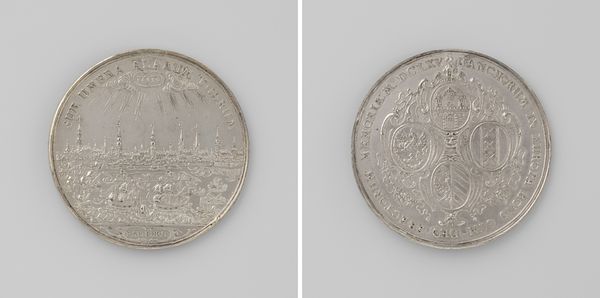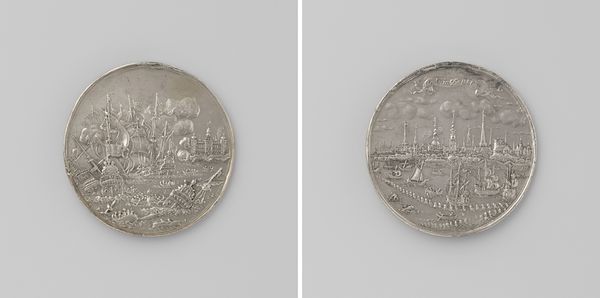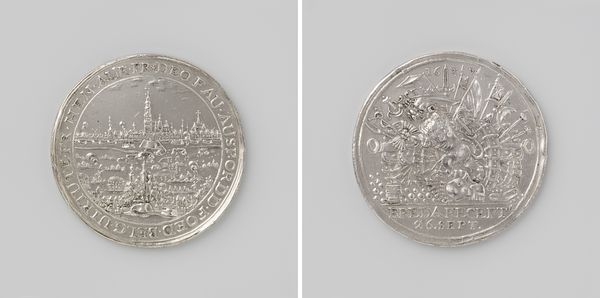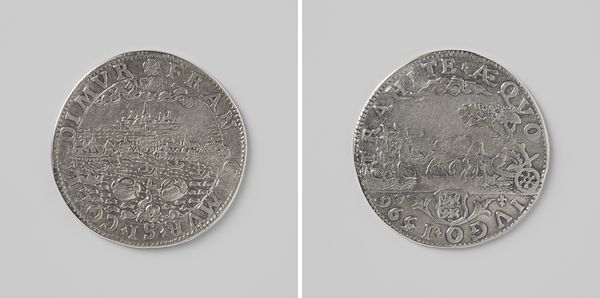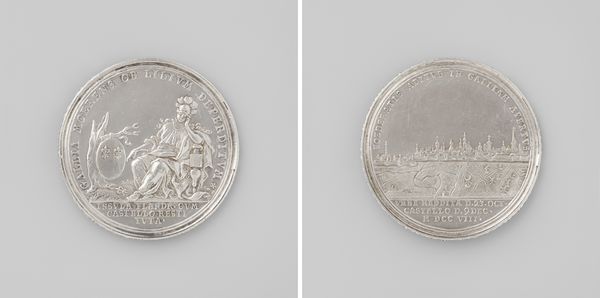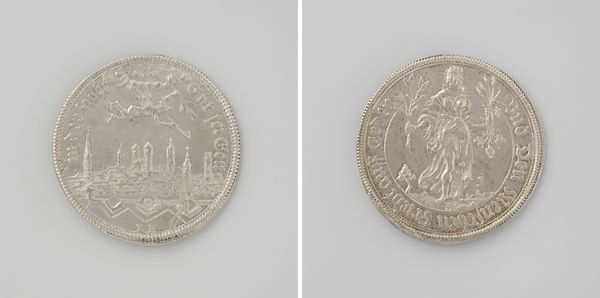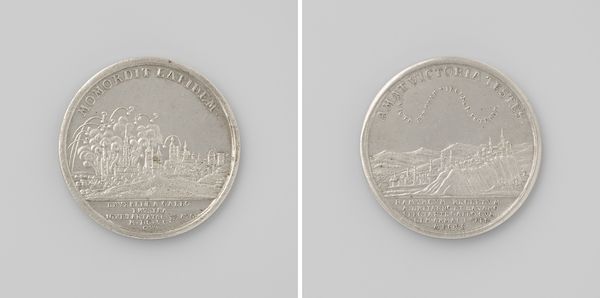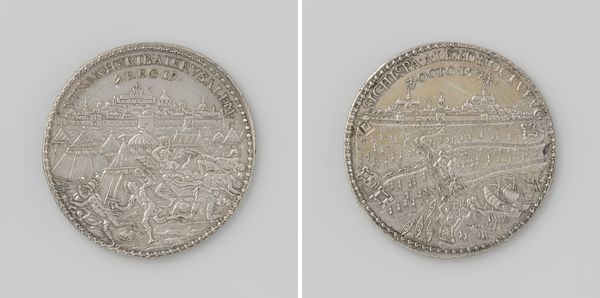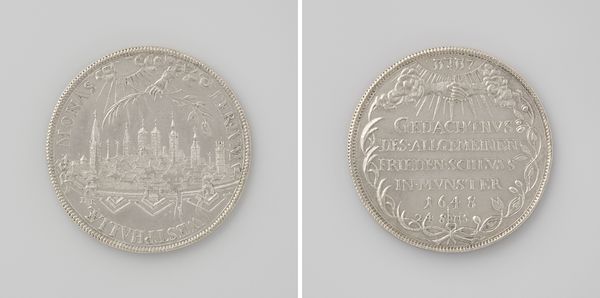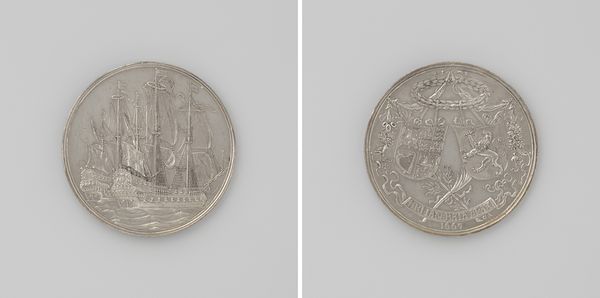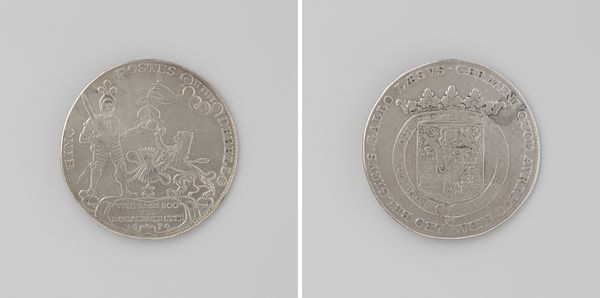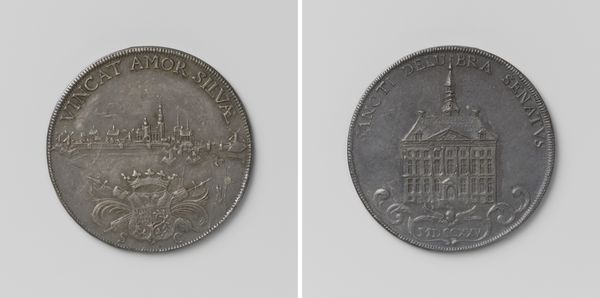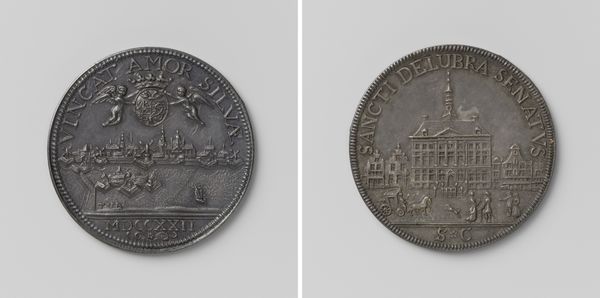
print, metal, relief, sculpture, engraving
#
baroque
# print
#
metal
#
relief
#
geometric
#
sculpture
#
ceramic
#
cityscape
#
history-painting
#
engraving
Dimensions: diameter 4.1 cm, weight 21.90 gr
Copyright: Rijks Museum: Open Domain
Editor: Here we have the "Vrede van Munster," created in 1648. It seems to be a metal relief, possibly an engraving. I find it quite fascinating how a historical event can be immortalized in such a miniature, almost intimate, format. What’s your perspective on this work, considering the context of its creation and display? Curator: The "Vrede van Munster," indeed a work commemorating a pivotal moment, demands we consider the role of art as political instrument. Such medallions were often commissioned by states or wealthy individuals to broadcast particular narratives and solidify power. Editor: So, it’s less a neutral depiction and more a form of… propaganda? Curator: I wouldn’t necessarily use the loaded term 'propaganda' so readily. But yes, we must remember that historical art rarely exists outside of social and political structures. Who funded it, how it was circulated, and what image it intended to project all factored into its meaning and impact. Look closely, what message do you think the imagery on the medallion intends to portray about the Peace of Munster? Editor: There's a cityscape on one side. Perhaps prosperity or… stability? On the other side there are maybe… doves and flourishing plants? Peace and harmony? Curator: Precisely. Now think about where this medallion might have been distributed, to whom, and what impact such images, repeated en masse, might have had on solidifying public opinion and celebrating the role of particular political figures. It speaks volumes about the potency of images in shaping collective memory. Editor: That's a compelling point. I had been looking at it as simply a record of a historical moment, but the layer of social influence it has changes my interpretation of it drastically. Curator: It highlights the need to consider not just *what* is represented, but *why* and *how*. Only then can we approach a richer understanding.
Comments
No comments
Be the first to comment and join the conversation on the ultimate creative platform.
